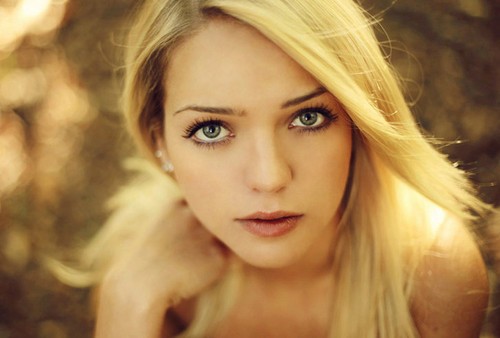Table of Contents
Exposure Compensation EV Value Theoretical Knowledge
Photography-loving friends all know that if a scene is to be photographed, there will always be a suitable amount of exposure. If the exposure is not enough, there will be a problem of underexposure, and the picture will be black. On the contrary, it is overexposed and the picture is white.
So, what is exposure? The so-called exposure is the exposure value, do you feel familiar? In fact, EV is the abbreviation of expose value. So the so-called ev adjustment is the exposure adjustment.
How can I get the right exposure of the image? The key is to choose the correct aperture and shutter. When shooting the same scene, if the exposure is the same, the shape of the picture they get must be exactly the same! The above theory is the so-called reciprocity rate.
But do keep in mind that this theory will fail if the shutter time is too short (less than 1/1000th of a second) or too long (more than 1 second).
To get the same amount of exposure, the aperture goes from f2.0 to 2.8, 4.0, 5.6, 8.0, and the shutter speed doubles for each stop down. The aperture is like the diameter of a water dragon, and the exposure time is equivalent to the time it takes for the water to enter. The diameter of the water dragon is smaller, in order to obtain the same water intake, it is necessary to have a longer water intake time.
Exposure Compensation for Digital Cameras
Features
In order to take a good photo, the camera needs to ensure that the exposure is accurate. However, the natural weather, the unpredictable changes of light, and the wide variety of subjects, make light metering a very complicated task.
In some cases, the camera’s own metering may be biased, which requires a certain degree of exposure compensation. For the traditional automatic cameras in the past, the light metering is completely dependent on the camera itself when it is working, and the user is basically unable to intervene too much. Only a camera with a manual mode can partially intervene in exposure. Therefore, in some mid-to-high-end cameras, the exposure compensation function will be a part to allow users to adjust.
In digital cameras, 100% of them have the function of exposure compensation. Even the simplest fully automatic type of point-and-shoot digital camera is capable of exposure compensation. For digital cameras, according to their different grades, there may be no manual modes such as aperture priority, shutter priority, etc., and there may be no flash slow sync mode. But in the menu of the digital camera, you can definitely find a parameter called “EV” value, which is exposure compensation. It can improve to some extent underexposure or overexposure caused by inaccurate camera metering. It is also possible to create works of special artistic effects according to the photographer’s intention.
Exposure compensation range for digital cameras
Almost all digital cameras have the same exposure compensation range, which can be added or subtracted within plus or minus 2EV. But the addition and subtraction are not continuous, but jumping at 1/2EV or 1/3EV intervals. The early old-fashioned digital cameras were separated by 1/2EV, so there were 8 grades of -2.0, -1.5, -1, -0.5 and +0.5, +1, +1.5, +2. The current mainstream digital cameras are more finely divided, with 1/3EV intervals, so there are -2.0, -1.7, -1.3, -1.0, -0.7, -0.3 and +0.3, +0.7, + 1.0, +1.3, +1.7, +2.0, etc., a total of 12 levels of compensation value.
How to use exposure compensation for digital cameras
For detailed operation, of course, you must read the manual carefully. There are generally two ways to call up the exposure compensation function: one is to call it up from the camera’s menu. Generally we call this option “Exposure Compensation” or with the word “EV”. Another way is the shortcut keys, different camera operations are very different. Since the modification of the EV value may be frequent, you may wish to familiarize yourself with its shortcut operations, so as not to delay time and miss valuable shots due to temporary adjustments.
Why Exposure Compensation is Necessary
Since we call it “exposure compensation”, as the name implies, it is to compensate for the deviation of exposure. And the exposure deviation is obviously caused by the camera’s metering ability. We might as well analyze the factors that affect the accuracy of camera metering.
Metering Mode
First of all, the metering mode of the camera has a great influence on the accuracy of metering. We know that the camera’s automatic metering functions include average metering, center-weighted metering, spot metering, multi-area metering and so on. The reason why there are so many patterns is nothing more than the unpredictable nature of the light. For different times, different places, different subjects, and different photographers’ different performance maps, a single metering mode is really stretched. Therefore, there are many useful metering methods in different environments to improve the accuracy of exposure.
However, even so, it still cannot meet many special occasions and situations. After all, a camera is a machine and cannot think like a human being. It is impossible to understand your shooting intentions. And it can only do rough processing according to the situation preset by the manufacturer. One of the important factors in the level and price of the camera is the level of light metering capability. High-end cameras can’t guarantee 100% accuracy, and for low-end cameras, the metering mode is more likely to be single. That cannot guarantee accurate metering and exposure in complex environments.
The principle of camera metering
Secondly, from the perspective of the principle of camera metering, most of the low-end automatic cameras use to obtain the brightness of the entire screen. Then calculate the average value or select several areas with emphasis. And obtain the brightness information according to their brightness values. .
Such an algorithm is obviously relatively crude. In some special situations, such as the strong contrast between the light and dark of the scene, the subject is not in the center, the subject is bright and the background is dark, etc., it is often easy to mislead the camera, causing the metering to deviate.
For high-end cameras, photographers mostly use TTL (meaning through the lens) metering , and the accuracy is within 0.5EV. The metering accuracy of mid-range cameras is within 1EV. While many low-end cameras use internal and external metering, and the deviation may reach 2EV.
Generally speaking, the smaller the brightness contrast of the scene, the more accurate the exposure, otherwise the deviation will increase. The grades of the cameras are high and low. The higher the grade, the more accurate the metering, and the lower the deviation will increase. If it is a traditional camera, the latitude of the film is relatively large. The deviation of exposure will not be a big problem within a certain range. But the latitude of the CCD of a digital camera is relatively small. And a slight exposure deviation may affect the overall effect.
Correct Use of Exposure Compensation – Change Passive to Active
For those of you who own a digital camera, exposure compensation is very useful whether you are using high-end or low-end equipment. Especially for low-end fully automatic digital cameras, exposure compensation may be the only part you can participate in and control the photo shooting process. In models that lack a powerful manual mode, exposure compensation is the magic weapon for you to turn passive into active and greatly improve the quality of your shots.
When to use exposure compensation? How to make compensation? How much compensation is appropriate?
(to Be Continued)
